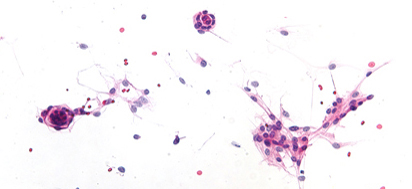CME Learning Objectives for
Genomic Medicine Lecture Series
Lecture 1: Experimental methods for measuring and manipulating DNA/RNA
The lecture will give an overview of the close linkage between technological tools for studying nucleic acids, and discoveries in biology and medicine enabled by them. By the end of the lecture, participants should understand:
- The chemical structure of DNA and RNA; how this determines the stability and functional activity of these molecules
- Assays based on hybridization to detect particular DNA or RNA molecules
- DNA/RNA-manipulating enzymes and molecular cloning methods
- The polymerase chain reaction, and related methods
- The different technologies used to determine the sequence of DNA and RNA
- Insights that gene sequence data have given in medicine, and the current limits of that knowledge
Lecture 2: Components of genomes, and human genetic variation
An overview of features of the human genome: protein-coding genes, non-coding genes, and gene-poor regions of the genome. Discussion of what is known of how different human populations and individuals differ from each other genetically, and consequences for health and disease. By the end of the lecture, participants should understand:
- The size, structural features, and organization of the human genome; some comparisons to other genomes from model organisms where disease-related studies have been performed
- Key features of protein-coding genes, and how these relate to gene regulation, and mechanisms of disease
- Kinds of non-protein coding genes, and their proposed functions
- Ways that the genome is modified and controlled (covalent modifications of DNA, chromatin alterations, DNA-interacting proteins)
- Major types of genomic variation among different human populations and individuals, and some examples of how these relate to diseases
Lecture 3: Microarrays and analysis of hybridization data
An overview of the first highly parallel assays for gene expression and DNA copy number. By the end of the lecture, participants should understand:
- Different kinds of microarray technologies (array fabrication, and experimental methods) that have been used for mRNA or DNA measurements
- Mathematical methods that can be applied to highly parallel assay data to study relationships among different biological samples
- New disease classifications and insights that arose from microarray data measuring mRNA expression
- DNA copy number assays and medical applications of these
Lecture 4: DNA sequencing and high-throughput DNA sequencing (HTS) methods
Overview of current HTS methods and possible future methods. By the end of the lecture, participants should understand:
- Sequencing-by-synthesis methods (pyrosequencing, Illumina, and other approaches)
- Hybridization-based methods
- Single-molecule, non-amplified, approaches
- Single-tag vs. paired tag and multiple tag approaches; advantages of each
- Basic kinds of algorithms used to analyze HTS data (mapping reads onto reference genome, discovering variants)
- Economics of genome sequencing using these methods
Lecture 5: Major Mendelian genetic disorders
Overview of major chromosomal, single-locus, and single-gene (including mitochondrial) disorders and their genetics. By the end of the lecture, participants should understand:
- Major disorders resulting from chromosomal losses/alterations
- Major disorders caused by large deletions
- Major genetic disorders caused by point mutations or small indels
- Repeat expansion disorders and their unique features
- Mitochondrial genetic disorders
- The impact of genetic diagnosis on patient treatment options and counseling
Lecture 6: Acquired mutations in human cancers I: Solid tumors
Overview of genetic lesions in solid tumors. By the end of the lecture, participants should understand:
- Translocations and other mutations found in sarcomas; pathways or mechanisms thought to be affected by these
- Genetic lesions found in carcinomas; pathways or mechanisms thought to be affected by these
- Whole genome sequencing of solid tumors, and conclusions from these initial efforts
Lecture 7: Pharmacogenomics
Overview of pharmacogenomics for pathologists who haven’t prescribed medications for a long time. By the end of the lecture, participants should understand:
- Major pathways of drug absorption and distribution, and genetic variations that affect these
- Major pathways of drug metabolism, and genetic variations that affect these
- Which mutations are the most clinically important for patient management
- What are the limits of pharmacogenomic predictions made using current data?
Lecture 8: HLA genetics
Overview of HLA and clinical implications of HLA typing. By the end of the lecture, participants should understand:
- Structure and genes of the HLA loci in humans
- Clinical settings where HLA typing and matching is required, and clinical impact of varying degrees of matching
- Pros and cons of new locus sequencing methods compared to established serologic and cellular assays for HLA typing
Lecture 9: Acquired mutations in human cancers II: Hematopoietic malignancies
Overview of genetic lesions in hematopoietic malignancies. By the end of the lecture, participants should understand:
- Major translocations found in lymphoid neoplasms; pathways or mechanisms thought to be affected by these
- Major translocations found in myeloid neoplasms; pathways or mechanisms thought to be affected by these
- Point mutations and small lesions in AML
- Mutations in myeloproliferative neoplasms
- Whole genome sequencing of hematopoietic malignancies, and conclusions from these initial efforts
Lecture 10: Personal genomics: commercial, regulatory and ethical considerations
Overview of new businesses and healthcare paradigms involving determination of customer or patient genetic information, with or without involvement of the medical profession. By the end of the lecture, participants should understand:
- New personal genetics/genomics companies, what methods they use, what data and interpretation they provide
- Current role of genetic counseling in medicine, and regulatory issues raised by the new personal genetics/genomics companies
- Medical, economic, and ethical considerations raised by new whole genome sequencing methods in the U.S. healthcare system

